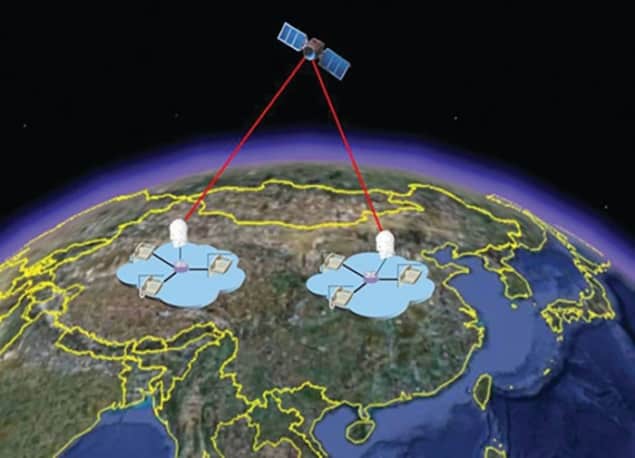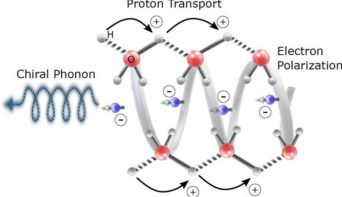
Entangled photon pairs have been separated and sent to cities in China more than 1200 km apart. This is about 10 times further than had been achieved previously. The feat was performed using pairs produced on board a Chinese satellite and could lead to the development of long-distance quantum cryptography.
In August 2016, China launched the world’s first satellite dedicated to testing the fundamentals of quantum communication in space. On board the $100m Quantum Experiments at Space Scale (QUESS) spacecraft is a “Sagnac” interferometer that is used to generate two entangled infrared photons by shining an ultraviolet laser on a nonlinear optical crystal. Now, a team led by Jian-Wei Pan of the University of Science and Technology of China in Hefei has used the photon source to distribute entangled photons to pairs of three ground stations in China – each up to 1200 km apart.
Increasing distances
Entanglement is a purely quantum-mechanical phenomenon whereby two or more particles can have a closer relationship than is allowed by classical physics. Entanglement plays an important role in quantum technologies such as quantum cryptography, quantum teleportation and networks for distributing quantum information. Over the past decade, physicists have been able to transmit pairs of entangled photons over increasing distances, both in the air and along optical fibres.
The distance record in both media had been about 100 km. Photon loss increases exponentially with distance travelled, so linking distant cities using fibre would be extremely difficult. While quantum repeaters could be used to boost the transmission distances, practical devices are proving difficult to create. Satellite distribution is an attractive solution because much of the photon’s journey is through parts of the atmosphere with very low air pressure – and therefore low photon loss.
Polarization entangled
The source on board QUESS produces nearly six million entangled photon pairs per second. Each pair is entangled in terms of the horizontal and vertical components of the photons’ polarization. The pairs are split and individual photons are directed at two different receiving stations – covering distances of 500–2000 km. To minimize the angular spread of the photons over long distances, Cassegrain telescopes are used to focus the light into a beam with a divergence of about 10 μrad.
The photons are received on Earth using telescopes with diameters of 1.2–1.8 m and their polarizations are measured to verify entanglement. This is done by doing a “Bell test”, which determines whether correlations between the photons are stronger than that allowed by classical physics. The test confirmed entanglement at a statistical confidence of four standard deviations.
High fidelity
The team was able to detect entangled photons at a rate of about one pair every second. The quality of the entanglement – the state fidelity – was about 0.87, with perfect fidelity being 1. This represents an efficiency that is 1012 greater than is possible using special optical fibres and 1017 greater than possible using commercial fibres.
The researchers say that satellite-based entanglement distribution could be used to implement quantum key distribution (QKD) on a global scale. QKD uses the laws of quantum mechanics to ensure that two parties can securely exchange cryptography keys and is already being used over short distances by banks.
The research is described in Science.



